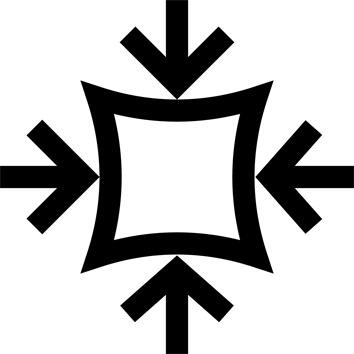What is bodysurfing?
Bodysurfing involves surfing waves with your body. It is practiced with a pair of fins and a handplane (only one handplane is needed).
What is a handplane?
A handplane (also known as a bodysurfer's board or handboard) is a small board that is positioned under the bodysurfer's hands, making it easier to glide and steer in the wave.
This handplane uses soft, lightweight materials to increase its ability to float and thus lighten the bodysurfer's weight to catch waves more easily.
Its rounded shape makes it easier to glide and steer.
How to use this bodysurfing handplane?
This version of the "Discovery" handplane is designed to be as accessible and fun as possible, and has therefore been conceived for use without flippers in the waves/foams of the beachfront, with water up to the navel. In this case, flippers are unnecessary, and propulsion is achieved by pushing your feet off the ground as you pass through the waves. The body must be sheathed, arms stretched forward, resting on the handplane.
What makes this handplane different from other handplanes?
The special feature of the Discovery handplane is that its volume and shape are adapted for easy gliding in the small waves and mosses of the beach shore. This allows it to float better, to lighten the body and to be used without fins.
For use in bigger waves and further from the shore, this is possible but it is then recommended to use fins (ideally symmetrical bodyboard fins). For such use, however, the Handplane 100 is more suitable.
Safety rules and behaviour in the water - Part 1.
Bodysurfing is a fantastic sport that requires certain fundamental rules to be respected for everyone's enjoyment and safety.
1- Find out about and observe the characteristics of the spot: current, rocks, tidal influence, wave size, number of people in the water...
2- Don't overestimate your level, and prefer an easier spot if conditions exceed your abilities.
3- Practice with suitable equipment: fins and handplane in good condition, suitable neoprene wetsuit.
Safety rules and behavior in the water - Part 2.
4- Respect the rules of priority on the wave: priority to whoever is closest to the breaker.
5- Go around the breaker zone when you go up to the peak.
6- Use fins. Otherwise, we recommend that you practice in the safe swimming area.
7- Do not practice in waves that break directly on the sand.
8- Protect your head in the event of a fall, by trying to fall on your side (never head first).
9- Practice with others.
Do not leave exposed to extreme heat.
When not in use, take care not to expose your handplane to sunlight or temperatures >40°C. So protect your handplane in a bag, under an umbrella, in the shade or under a light towel, to prevent it from overheating. In particular, avoid leaving it in a car in direct sunlight. Exposure to excessive heat can result in blisters, bubbles or even deformation of the handplane.
RADBUG
RADBUG is the Decathlon brand dedicated to bodyboarding and bodysurfing.
Our raison d'être is to bring the incredible sensations of bodyboarding and bodysurfing to as many people as possible.
The sensation of gliding over the wave is pure, intoxicating and addictive.
Our mission is to enable everyone to learn and progress by offering easy, daring products for ever greater pleasure.


